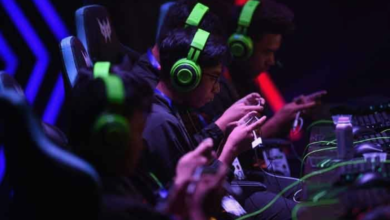Digital Inclusion Programs Making a Difference in Pakistan
Digital inclusion programs are transforming Pakistan by bridging the digital divide. Learn how tech access empowers education.

Digital inclusion programs are playing a transformative role in Pakistan by bridging the technological divide and empowering underserved communities. In a country where nearly half the population remains unconnected to the internet, these initiatives are critical for socio-economic progress. From rural villages to urban slums, government bodies, non-profits, and private enterprises are working to ensure that technology reaches those who need it most. This article explores the impact of digital inclusion in Pakistan, the key stakeholders driving change, and the challenges that must be overcome to achieve nationwide digital equity.
Digital inclusion programs are transforming Pakistan by bridging the technological divide and empowering marginalized communities. In a country where internet penetration remains uneven and millions lack access to digital tools, these initiatives are crucial for socio-economic development. From rural areas to urban slums, various government, non-profit, and private sector efforts are ensuring that technology reaches those who need it most. This article explores how digital inclusion is reshaping Pakistan, the key players driving change, and the challenges that remain in achieving nationwide connectivity.
Digital Inclusion Programs Making a Difference in Pakistan
The State of Digital Divide in Pakistan
Pakistan faces a significant digital divide, with urban areas enjoying far better connectivity than rural regions. According to the Pakistan Telecommunication Authority (PTA), internet penetration stands at around 54%, but this figure drops drastically in remote areas due to infrastructure limitations. Millions of Pakistanis, particularly women and low-income groups, remain excluded from the digital economy, limiting their access to education, healthcare, and financial services.
Government-Led Initiatives for Digital Empowerment
The Pakistani government has taken proactive steps to promote digital inclusion through policies and programs. The Digital Pakistan Vision, launched in 2018, aims to create a knowledge-based economy by enhancing IT infrastructure, promoting startups, and improving e-governance. Under this initiative, the government has introduced projects like TeleSchool and Taleem Ghar, which provide free educational content to students.
National Rural Support Programme
Additionally, the National Rural Support Programme (NRSP) has been training rural communities in digital skills, helping farmers and artisans leverage online platforms for better market access. These efforts are gradually reducing disparities, but more investment is needed to scale their impact. Recognizing this gap, various digital inclusion programs have been launched to ensure equitable access to technology.
Private Sector and NGO Contributions
Beyond government efforts, private companies and non-governmental organizations (NGOs) are playing a crucial role in advancing digital inclusion programs. Telecom giants like Jazz, Telenor, and Zong have expanded 4G coverage to remote areas while offering low-cost data plans to make the internet more affordable. Meanwhile, organizations like The Citizens Foundation (TCF) and Code for Pakistan are conducting digital literacy workshops, particularly targeting women and youth.
Digital Literacy
Access to technology alone is not enough digital literacy is essential for individuals to fully benefit from the digital revolution. Many digital inclusion programs now prioritize training in basic computer skills, online safety, and e-commerce. For example, the PTA’s Digital Literacy Program educates users on cybersecurity threats and responsible internet usage. Similarly, initiatives like Google’s DigiSkills offer free online courses in freelancing, graphic design, and digital marketing.
The Key to Meaningful Inclusion
Women, who often face cultural barriers to technology adoption, are a major focus of these programs, with organizations like Women’s Digital League providing mentorship and employment opportunities in the tech sector. Financial Technology such as JazzCash and EasyPaisa are also driving financial inclusion by enabling digital payments for the unbanked population. These collaborations between public and private entities are accelerating Pakistan’s journey toward a digitally inclusive society.
E-Learning
One of the most significant impacts of digital inclusion programs is seen in the education sector. With millions of children out of school, e-learning platforms have become a lifeline for students in underserved areas. TeleSchool, a government-run TV channel, broadcasts educational content for grades 1-12, while Taleem Ghar offers interactive lessons via smartphones. NGOs like Teach For Pakistan are also integrating tablets and digital tools into classrooms, enhancing learning outcomes.
Revolutionizing Education in Pakistan
During the COVID-19 pandemic, these initiatives proved invaluable, ensuring continuity in education despite school closures. However, challenges such as electricity shortages and device affordability still hinder widespread adoption, calling for further innovation in low-tech e-learning solutions. The State Bank of Pakistan’s Raast instant payment system further facilitates seamless digital transactions, reducing reliance on cash.
Financial Inclusion Through Digital Solutions
Another critical area where digital inclusion programs are making a difference is financial services. Traditional banking penetration remains low in Pakistan, with only 21% of adults having formal bank accounts. Mobile wallets like JazzCash, EasyPaisa, and Nayapay are filling this gap by enabling digital transactions for the unbanked. Small business owners, daily wage workers, and even farmers are now using these platforms to receive payments, save money, and access microloans.
Challenges
Despite progress, Pakistan’s digital inclusion efforts face several hurdles. Infrastructure gaps, particularly in rural areas, limit internet accessibility, while frequent power outages disrupt connectivity. Affordability remains a major concern, as smartphones and data plans are still out of reach for many low-income families. Additionally, low digital literacy and cybersecurity risks pose barriers to safe and effective technology use by integrating marginalized populations into the formal economy.
The Path Forward
To address these challenges, the government must increase funding for rural broadband expansion, subsidize devices for students, and strengthen cybersecurity laws. Public-private partnerships will be crucial in scaling successful digital inclusion programs and ensuring sustainable impact. Requiring continued collaboration between the government, private sector, and civil society. These innovations are not only boosting financial inclusion but also driving economic growth.
Read More: How Artificial Intelligence Is Being Used in Pakistan’s Public Sector
Conclusion
Digital inclusion programs are undeniably transforming Pakistan, breaking down barriers and creating opportunities for millions. By expanding internet access, enhancing digital literacy, and integrating technology into education and finance, these initiatives are paving the way for a more equitable and prosperous society. While significant progress has been made, the journey toward full digital inclusion is far from over.
As Pakistan moves forward, prioritizing digital inclusion will be essential for achieving long-term socio-economic development. From empowering women entrepreneurs to enabling remote education for children in far-flung villages, technology is proving to be a powerful equalizer. With sustained investment and innovation, Pakistan can ensure that no one is left behind in the digital age, unlocking new possibilities for growth and progress.
FAQs
What is the goal of digital inclusion programs in Pakistan?
Digital inclusion programs aim to provide equitable access to technology, internet connectivity, and digital skills training, particularly for marginalized communities.
How is the Pakistani government promoting digital literacy?
Through initiatives like TeleSchool, DigiSkills, and PTA’s awareness campaigns, the government is training citizens in essential digital skills and safe internet usage.
What role do mobile financial services play in digital inclusion?
Services like JazzCash and EasyPaisa enable digital transactions for the unbanked, promoting financial independence and reducing reliance on cash.
What are the biggest challenges to digital inclusion in Pakistan?
Key challenges include infrastructure gaps, electricity shortages, affordability issues, and low digital literacy in rural areas enabling schools, hospitals, and small businesses to operate more efficiently.
How can individuals contribute to digital inclusion efforts?
People can support by volunteering with NGOs, donating devices, advocating for policy reforms, or mentoring others in digital skills.











